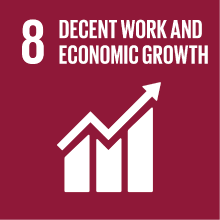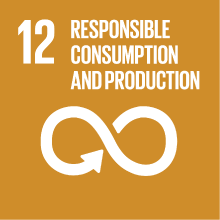COMPARATIVE BUSINESS HISTORY
- Academic year
- 2019/2020 Syllabus of previous years
- Official course title
- COMPARATIVE BUSINESS HISTORY
- Course code
- EM6059 (AF:320341 AR:170160)
- Teaching language
- English
- Modality
- On campus classes
- ECTS credits
- 6
- Degree level
- Master's Degree Programme (DM270)
- Academic Discipline
- SECS-P/12
- Period
- 2nd Term
- Course year
- 2
- Where
- VENEZIA
- Moodle
- Go to Moodle page
Contribution of the course to the overall degree programme goals
In such a perspective, the educational aims of the course are: 1) making the students acquainted with historical debates on business; 2) provide the instruments to set managerial theoretical problems in their proper historical context, and 3) understand the scope limiting conditions of managerial theories.
In particular, after an introduction presenting the peculiarity of a historical approach to business studies, the course will follow a chronological order taking into exam the historical evolution of business and theoretical debates of the time. Some classes will focus on Q&A on the textbook and on the presentation and discussion of case studies.
Expected learning outcomes
Knowing the main discontinuities in business history, from preindustrial times to the scientific and industrial revolutions.
Understanding the main issues of the debate on business history.
Understanding the peculiar character of historical research vs social sciences.
Ability to apply knowledge and understanding:
Ability to provide a historically consistent definition of business enterprise in different periods.
Ability to set correctly in the historical context the debates on business forms.
Ability to define the scope limiting conditions of managerial theories.
Judgment ability:
Ability to distinguish the forms of business following the historical context.
Communication ability:
Ability to publicly present research and to discuss it.
Learning ability:
Ability to read and critically discuss a historical text.
Ability to distinguish between historical rigour and scientific rigour.
Pre-requirements
Contents
2 - Why history is different? (Rowlinson-Hassard-Decker).
3 - Pre-industrial forms of business (Epstein).
4 - The case of a preindustrial manufacture (Favero 2006)*
5 - A theory of the firm (Coase); Q&A on the Industrial Revolution (Amatori-Colli II).
6 - A theory of the enterprise (Langlois).
7 - Debates on British entrepreneurship (McCloskey-Sandberg).
8 - Birth of the U-form (Chandler).
9 – The long rise of the corporation (Lamoreaux); Q&A on the second Industrial Revolution (Amatori-Colli III)
10 - A case of shifting corporate governance (Favero 2012)*
11 - The macroeconomic context: from the Great Depression to the Great Recession; Q&A on corporate capitalism (Amatori-Colli IV).
12- An institutional interpretation of the M-form (Williamson).
13 - Q&A on multinationals and global capitalism (Amatori-Colli V-VI).
14 - The emergence of the N-form (Powell).
15 - A network firm in evolution (Favero 2005)*
* case studies to be prepared and discussed by students.
Referral texts
Amatori F. & Colli A., 2011, Business History: Complexities and Comparisons, London: Routledge 2011, 272 pp. ISBN: 978-0415423977.
Papers:
Chandler A.D., 1973, Decision Making and Modern Institutional Change, Journal of Economic History, 33(1): 1-15.
Coase R., 1937, The Nature of the Firm, Economica, 4: 386-405.
Epstein S.R., 1998, Craft guilds, apprenticeship and technological change in preindustrial Europe, Journal of Economic History, 58(3): 684-713.
Favero G., 2006, Old and new ceramics: Manufacturers, products and markets in the Venetian State (17th-18th centuries), in P. Lanaro (ed.), At the center of the Old World: Trade
and manufacturing in Venice and the Venetian Mainland, Toronto: Centre for Renaissance and Reformation Studies, pp. 271-315.
Favero G., 2006, Benetton: Identifying an Image, Imagining an Identity, Università Ca' Foscari Venezia, Dipartimento di Scienze Economiche, 06/WP/2006, pp. 1-9.
Favero G., 2013, Foreign family business and capital flight. The case for a fraud to fail, Università Ca' Foscari Venezia, Department of Management, 27/WP/2013, pp. 1-16
Lamoreaux N.M., 1998, Partnership, Corporations, and the Theory of the Firm, American Economic Review, 88 (2): 66-71.
Langlois R., 2002, Schumpeter and the Obsolescence of the Entrepreneur, University of Connecticut, Department of Economics, WP 19/2002.
McCloskey D.N. & Sandberg L.G., 1972, From damnation to redemption: Judgements on the late Victorian entrepreneur, Explorations in Economic History, 9: 89-108.
Powell W.W., 1990, Neither Market nor Hierarchy: Network Forms of Organization, Research in Organizational Behavior, 12: 295-336.
Rowlinson M., Hassard J. & Decker S., 2014, Strategies for Organisational History: A Dialogue between Historical Theory and Organisation Theory, Academy of Management Review, 39(3): 250-274.
Williamson O.E., 1981, The Modern Corporation: Origins, Evolution, Attributes, Journal of Economic Literature, 19 (4): 1537-68.
Assessment methods
Q&A sessions on the textbook require the previous reading of relevant parts. Case discussion requires the previous reading of texts, which may be presented and discussed by groups of students. One additional point will be assigned to each student for a correctly managed discussion and added to the grade resulting from the written test if this is sufficient.
Type of exam
Teaching methods
Further information
Ca’ Foscari abides by Italian Law (Law 17/1999; Law 170/2010) regarding support services and accommodation available to students with disabilities. This includes students with mobility, visual, hearing and other disabilities (Law 17/1999), and specific learning impairments (Law 170/2010). If you have a disability or impairment that requires accommodations (i.e., alternate testing, readers, note takers or interpreters) please contact the Disability and Accessibility Offices in Student Services: disabilita@unive.it.
2030 Agenda for Sustainable Development Goals
This subject deals with topics related to the macro-area "Circular economy, innovation, work" and contributes to the achievement of one or more goals of U. N. Agenda for Sustainable Development


